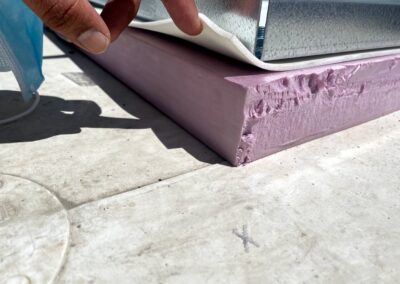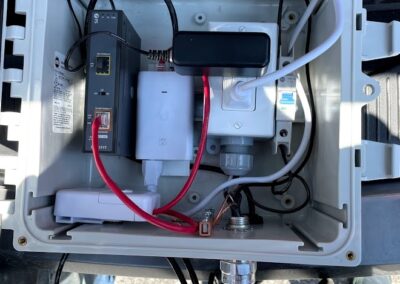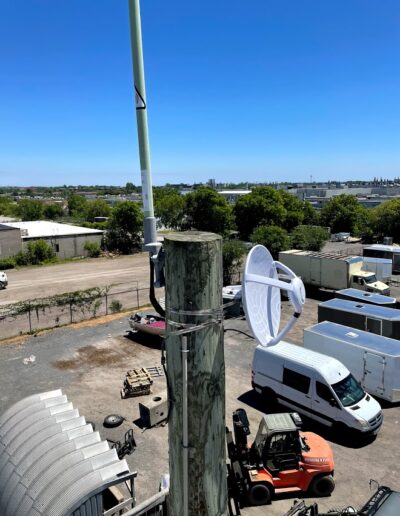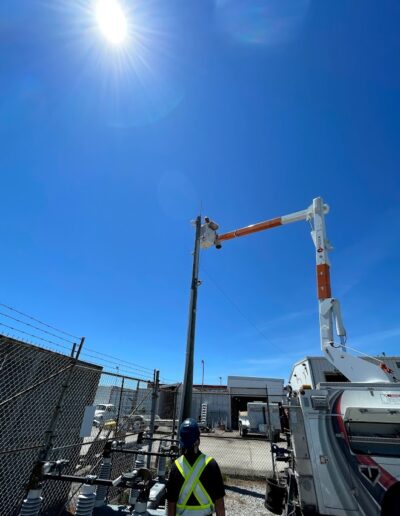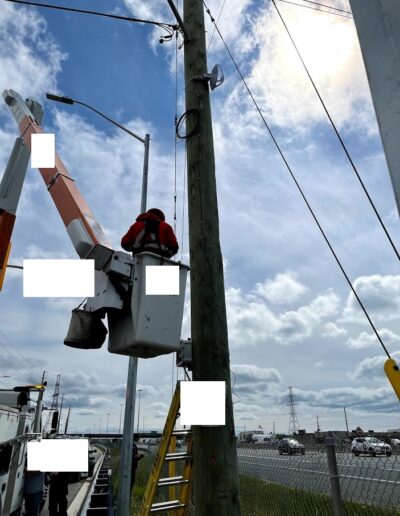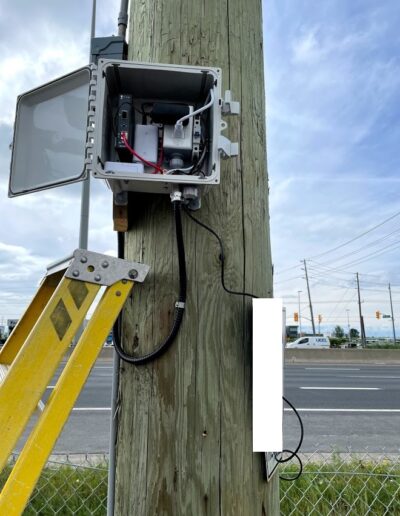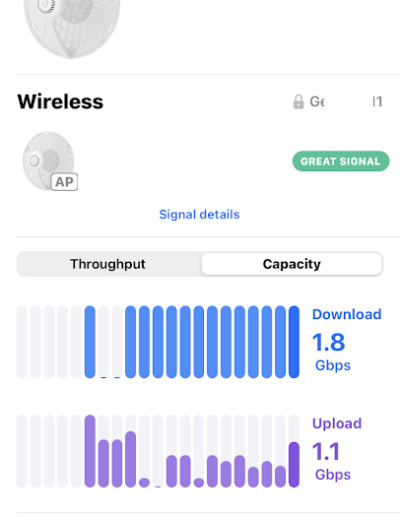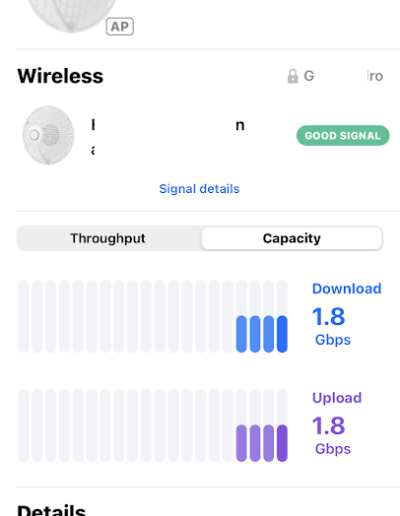Portfolio
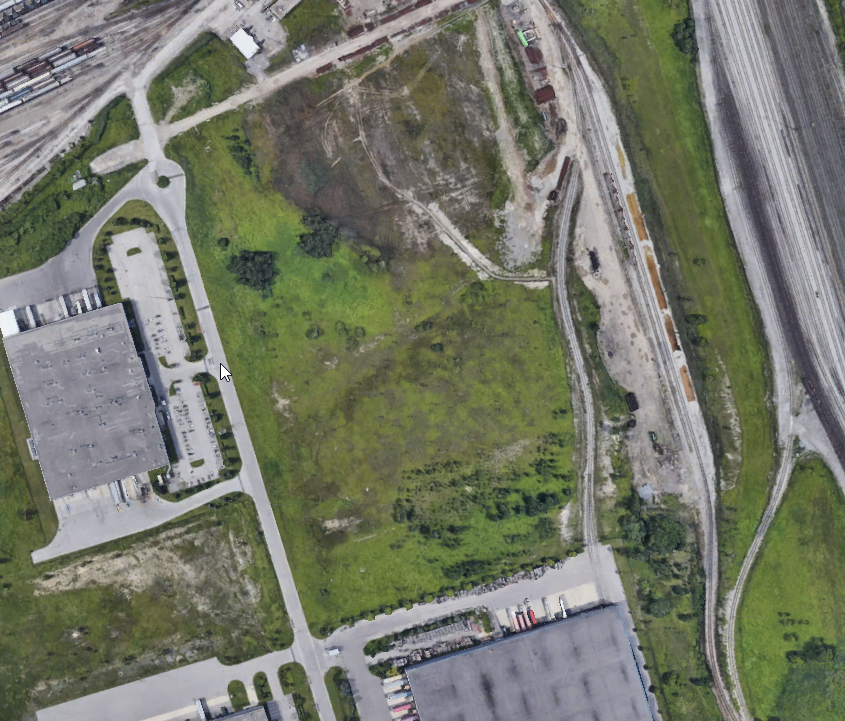
Case summary
- About 300,000sqft shipping fulfillment centre was getting built at an underdeveloped location
- Big telco companies were not in a situation to run fibre or provide internet service at that location at that time, or at least before their go live date.
- The fibre run was at least 8KM from our nearest FOSC, so we were also not in a position to run fibre at that location either. But we promised them to find work around (wireless solution) for them.
- I thoroughly investigated different options and created a hypothesis that has a higher probability of success.
- Notified the risks to the higher management, and later they came back with the “Go-Ahead” decision
Design
We conducted a site survey and determined that we could do a wireless bridging solution there until we run fibre at that location
- Identified 2 nearest hydro poles where we can install the antennas and has our fibre
In this phase we also determined the risks and challenges. They were:
- Warehouse’s roof was not complete, so I wasn’t sure that if we will have 100% line of sight or not. But locations were promising.
- Client needed 1Gbps RELIABLE connection. This kind of bandwidth or frequency of wireless connections are very susceptible to weather; so this type of wireless solutions are not often reliable. So I proposed 2 pairs of bridges and automatic failover with VRRP.
- VRRP configuration over wireless network is extremely complicated. The reason is the interface will never go down in the situation of a wireless failure.
- Straight line distance from the poles to the customer location was about 3KM, and we will be using 60GHz frequency to meet the bandwidth requirement. So, here antenna alignment was the most difficult task. 60GHz antennas needed to be laser focused with each other. And letting the bucket truck operator to do this job makes it even more difficult since they don’t know that what they are doing.
- Since the antennas will be fed power from the main power line, so ESA approval was a bit of a hassle and time-consuming work.
- Since we will be attaching load to the hydro pole, so we need to get pole load certification signed by a P.Eng.
- We needed to install 2 masts on top of the building to erect our antennas, but the building owner said that we can not drill his roof. So we had to buy non roof-penetrating masts and make them stable against wind by putting 12 concrete cylinder blocks on its base. Sourcing those blocks and getting it delivered to the customer location and taking them up to the 4-story building was a challenge as well.
- The last challenge was to design the NEMA enclosure. Had to source all kind of electrical materials, such as PEX cable, circuit breaker, ground plate, disconnect box etc.
Research, Sourcing & Project management
In this phase, I started
- Creating proper Visio diagram for us and for our NOC engineers
- Simulating configuration.
- Doing more research about the product that will meet our expectation
- Sourcing copper cabling contactors
- Sourcing bucket truck and operator
- Sourcing local wireless distributor
- Sourcing concrete blocks and delivery
- Sourcing electrician
- Identifying all the electrical components
- Sourcing fibre splicers
- creating project timeline and communicated with upper management and with the warehouse authorities
- And communicating everything with everybody. Because if one contractor doesn’t show up, then other contractors will be sitting idle at the site.
Deployment & Project management
- Cabling contractor installed the masts, antennas and ran the copper cable 1 week before the go live date
- 6 days before the go live date: NOC engineer configured the Juniper EX2300 CPE device for the customer
- 5 days before the go live date we handed over the pole load certification to the pole owner company
- 4 days before the go live date electrician installed the boxes on the hydro poles and obtained ESA certification
- 3 days before the go live date bucket truck came and installed the antennas on the poles and connected with boxes. We also tried to align the antennas but failed miserably.
- 2 days before the go live date ordered bucket truck again and tried to align the antennas but failed miserably again
- 1 day before the go live date: ordered bucket truck again and tried to align the antennas. Finally, one pair of antennas were successfully aligned and paired, but the other pair did not. On that pair, signal was coming for a second and disappearing on the next second. It was a very hot day. That day Canada had the record high temperature on 51C in B.C. and we worked 8 hours straight under the sun without any shades whatsoever. Just before giving up, I decided to do a factory reset on the antennas and then miraculously the antennas paired at full strength.
Lesson learned:
When nothing works just do a factory reset or slap the device.
Handing over to the customer
after the successful deployment; I documented every possible little details and handed over the documentation to the customer.
All done.


